Click on photos to enlarge. Names link to more information on identification and management.
| Invertebrates |
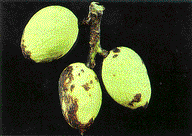
Citrus flat mite damage
Identification tip: Citrus flat mite feeding causes dark brown lesions on green nuts and on the rachis of the cluster. |
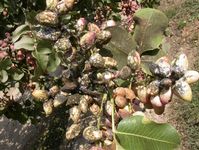
Mealybug damage
Identification tip: Mealybug feeding can lead to heavy honeydew and sooty mold contamination on clusters. |
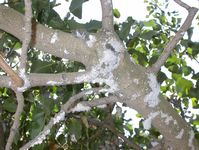 Mealybug infestation
Identification tip: Mealybugs aggregate on the trunk and main scaffolds, where they give the surface a white, bearded appearance. |
| Diseases |
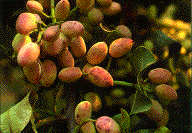
Alternaria late blight damage
Identification tip: Dark lesions develop on ripening fruit and leaves infected with Alternaria. |
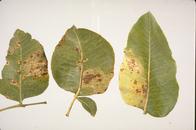
Alternaria late blight damage
Identification tip: Dark angular or circular lesions on leaves of both male and female trees are caused by Alternaria infection. |
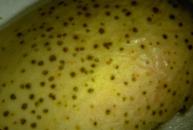 Alternaria late blight on ripening fruit Identification tip: On immature fruit the symptoms appear as small black lesions about 1 mm in diameter. |
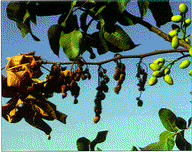
Botryosphaeria panicle and shoot blight damage
Identification tip: Leaves, nuts, and stems turn brown on shoots infected with Botryosphaeria. |
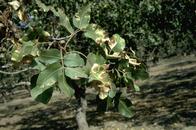 Botryosphaeria panicle and shoot blight damage
Identification tip: Large, dark brown lesions with wide yellow margins on several old leaves. |
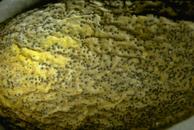 Botryosphaeria panicle and shoot blight damage
Identification tip:
Small, black pycnidia spot the surface of an immature fruit. |
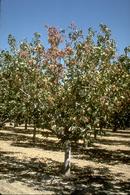 Verticillium wilt
Identification tip: Verticillium wilt becomes apparent when leaves on one or more branches, often on only one side of the tree, turn yellow or wilt. |
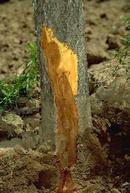 Other canker diseases
Identification tip: Excessive sap on trunk and scaffolds. Sparse, pale foliage can indicate Phytophthora. Cankers can be found in the bark at the crown area.
|
|
| Vertebrates |
 Ground squirrel adult
Identification tip: The adult head and body ranges from 9 to 11 inches long and it’s somewhat bushy tail is about as long as its body. The fur is mottled dark and light brown or gray. |
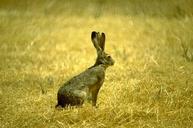 Jackrabbit (hare) adult
Identification tip:
The adult is about the size of a large house cat. It has very long ears, short front legs, and long hind legs. |
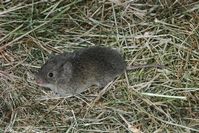 Meadow vole (meadow mouse) adult
Identification tip: Adult moles are larger than the house mouse but smaller than rats. Compared to deer mice, however, voles have a more robust body, less obvious ears, and a relatively shorter tail. |
 Pocket gopher
Identification tip: The adult pocket gopher is 6 to 8 inches long with a stout brown, gray, or yellowish body and small ears and eyes. It is rarely seen aboveground. |
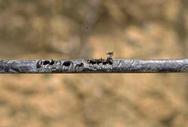 Jack rabbit (hare), Meadow vole, or Pocket gopher damage
Identification tip:
Rabbits, voles, and gophers may gnaw drip irrigation lines. |
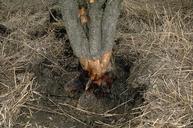 Meadow vole damage
Identification tip: Voles feed on bark around the root crown. Small trees are most susceptible to being completely girdled. |
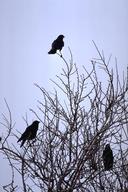 Crow adult
Identification tip: This bird is large, chunky, and black, with a heavy bill and feet. |
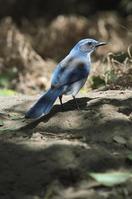 Scrub jays
Identification tip: An aggressive bird, the scrub jay is about 12 inches long and distinguished by its crestless head, olive-gray back, and white throat that is outlined in blue; head, tail, and wings are blue. |
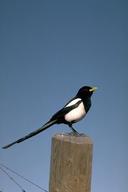 Yellow-billed magpie
Identification tip: This large noisy bird has distinct black and white markings on its body and a very long tail. |


